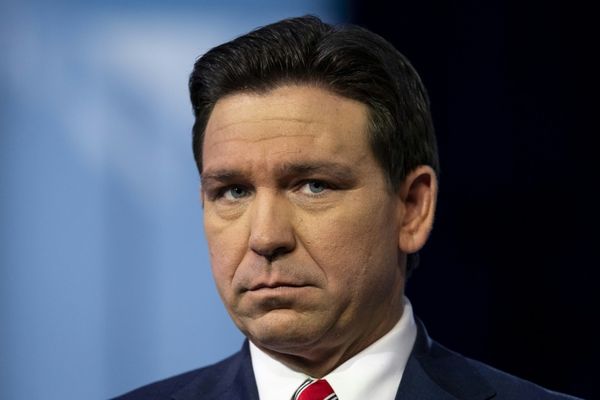
With the trial of disgraced FTX founder Sam Bankman-Fried set to begin next week, "SBF" could join the ranks of notorious hucksters Charles Ponzi and Bernie Madoff if convicted. But neither Ponzi nor Madoff ever operated on such a massive scale.
The crypto exchange Bankman-Fried cofounded in 2019 was worth a whopping $32 billion at its peak and his personal net worth was once an estimated $16 billion—before it all came crashing down. Those stratospheric figures make his impending trial one of the most closely watched in the history of financial crime. (He still maintains he is innocent.)
But how did this once-lauded wunderkind from a prominent background find himself before a jury of his peers? It all began at Stanford.

How it started
1992: Sam Bankman-Fried is born in Santa Clara County, Calif., on the campus of Stanford University. Parents Joseph Bankman and Barbara Fried were both professors at Stanford Law School. His father, Bankman, is a clinical psychologist and a lawyer specializing in tax law. His mother, Fried, focused on the intersection of law, economics, and philosophy, according to her bio on the Stanford Law School website.
2010–2014: Bankman-Fried attends MIT, the Massachusetts institute of Technology, in 2010 after flipping a coin to decide between it and Cal Tech. He majored in physics in college and earned a minor in math. Despite his natural intelligence, SBF was less interested in his classes than he was in hanging out with his friends in the Epsilon Theta fraternity, which at one point included several future FTX employees including cofounder Gary Wang. SBF reportedly held all-night game sessions where he enjoyed solving puzzles with a time restraint.
2014: Shortly after graduating, SBF lands a job at the Wall Street quant firm Jane Street, where he had completed an internship. SBF was reportedly interested in the firm because of his friends in the effective altruism movement (which advocates for trying to help the most people in the most effective way). Several Jane Street employees later joined FTX, including the future CEO of SBF’s crypto trading firm Alameda Research, Caroline Ellison, and the future president of FTX US, Brett Harrison. The firm specialized in arbitrage, or taking advantage of subtle price discrepancies in the market, which would later become Alameda’s bread and butter.
2017: SBF approaches Wang to ask him to help create crypto trading firm Alameda Research while he's working as a software engineer at Google. The company originally had $55 million under management that came from employees as well as loans from wealthy crypto investors, according to the New York Times.
2019: FTX is founded in part because of Alameda Research. While Alameda was still using its arbitrage strategies in the broader crypto markets, competition intensified and SBF saw FTX as a way to bring in revenue that could help fund Alameda’s trading. The exchange and founders moved from Hong Kong, where Alameda was based, to the Bahamas. The company soon created FTT, its own cryptocurrency that brought in revenue for FTX but that Alameda had a large stake in and major sway over. SBF and his employees, including Wang, lived in a compound of luxury apartments in Nassau called the Albany. A $40 million waterfront penthouse served as FTX’s base of operations. Employees lived and worked communally.
2022: FTX goes on an advertising spree. Its now-infamous Super Bowl commercial with Larry David aired in February, to kick off its sports involvement. In April, FTX signed a 19-year deal worth $135 million with Miami-Dade County to emblazon its name on the home arena of the Miami Heat. The company struck a deal with Major League Baseball in June for umpires to wear the firm’s logo on their uniforms. And in September, the company partnered with Formula 1 team Mercedes.
How it's going
Nov. 2, 2022: A report by CoinDesk reveals that FTX and Alameda Research are more intertwined than had been publicly disclosed. CoinDesk reported Alameda’s biggest asset was FTT, the cryptocurrency issued by its sister company, which raised concerns about its viability.
Nov. 6, 2022: In response to the CoinDesk report, Binance CEO Changpeng “CZ” Zhao says he will unload all of his exchange’s FTT holdings, which amounted to $580 million. “We gave support before, but we won’t pretend to make love after divorce…” CZ wrote in a tweet at the time.
Nov. 8, 2022: CZ and Binance sign a letter of intent to buy FTX, and SBF claims in a tweet that customer funds would be protected as part of the deal. The price of FTX’s FTT token quickly plunges 80%.
Nov. 9, 2022: The Wall Street Journal reports that Zhao and Binance have backed away from the deal to acquire FTX, with the company saying in a statement that “issues are beyond our control or ability to help.” The company was left with a $6 billion hole on its balance sheet. Before approaching Binance, SBF was reportedly turned down for more funding by Silicon Valley and Wall Street billionaires and was denied help by rival crypto exchanges such as Coinbase and OKX. Reuters reported that the Securities and Exchange Commission had been investigating FTX’s handling of customer funds for months.
Nov. 10, 2022: A Bahamian regulator freezes FTX’s assets, saying it’s aware certain assets may have been “mishandled, mismanaged, and/or transferred to Alameda Research.” California's Department of Financial Protection and Innovation is the first to announce an investigation into FTX.
Nov. 11, 2022: FTX, Alameda, FTX US and other related entities file for Chapter 11 bankruptcy on Nov. 11 and SBF steps down as CEO. He’s replaced with John J. Ray III, an experienced restructuring lawyer who once oversaw the liquidation of failed energy company Enron. In a Twitter statement SBF expressed regret: “I’m really sorry, again, that we ended up here. Hopefully things can find a way to recover.”
Nov. 12, 2022: The Wall Street Journal reports that higher-ups at FTX and Alameda knew FTX had lent customer funds to the trading firm to help cover for bad investments. Alameda CEO Caroline Ellison reportedly says in a video meeting that she, as well as SBF and FTX executives Nishad Singh and Gary Wang, were aware of the decision to intermingle funds.
Nov. 16, 2022: Lawmakers call on SBF to testify before Congress. House Financial Services Committee Chairwoman Maxine Waters (D-Calif.) says in a statement at the time that “The fall of FTX has posed tremendous harm to over one million users, many of whom were everyday people who invested their hard-earned savings into the FTX cryptocurrency exchange, only to watch it all disappear within a matter of seconds.”
Nov. 30, 2022: Bankman-Fried speaks virtually at the New York Times’s DealBook Summit and claims some responsibility for the collapse of FTX. He maintains that he'd been truthful in his statements about FTX and that although his lawyers didn’t approve of him giving the interview, he had “...a duty to talk and to explain what happened.” He claimed that he never tried to commit fraud.
Dec. 9, 2022: SBF said in a post on X, formerly Twitter, that he would testify before the House Committee on Financial Services on Dec. 13, although he said, “...there is a limit to what I will be able to say, and I won’t be as helpful as I’d like.”
Dec. 12, 2022: On the day before SBF is set to testify before members of the House, he's arrested in the Bahamas. The FTX cofounder is charged with counts that include wire fraud and conspiracy, according to an indictment from the U.S. Attorney of the Southern District of New York. On the same day, the SEC charges Bankman-Fried with defrauding investors in FTX Trading Ltd.
Dec. 21, 2023: SBF is extradited to the U.S. from the Bahamas, and the U.S. Attorney for the Southern District of New York announces the guilty pleas of Ellison and Wang.
Dec. 22, 2023: A New York judge grants SBF a $250 million bail, which he met in part thanks to his parents putting up their Palo Alto home as collateral.
Jan. 3, 2023: SBF pleads not guilty in a New York court.
Feb. 14, 2023: The judge overseeing SBF’s case orders him to stop using a VPN (virtual private network) to obscure internet browsing after he reportedly used one to watch the Super Bowl.
Aug. 11, 2023: Bankman-Fried is sent to a jail in New York after a federal judge revokes his bail. The 31-year-old had been under house arrest at his parents’ home in Palo Alto but was accused by prosecutors of interfering with witnesses.
Aug. 22: 2023: Lawyers for SBF claim in court documents that the jail he is being held at, the overcrowded Metropolitan Detention Center in Brooklyn, isn’t accommodating his vegan diet or giving him access to his prescription of Adderall. “He’s literally now subsisting on bread and water, which are the only things he’s served that he can eat, and sometimes peanut butter,” said attorney Mark Cohen.
Sept. 12, 2023: Bankman-Fried is denied early release before his trial, which is set for early October. The federal judge overseeing his case argues that SBF should remain in custody because he's had more than seven months to prepare for it and has had “extensive access” to electronic materials relevant to his case.







